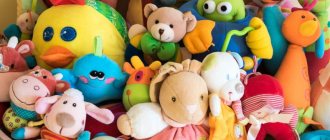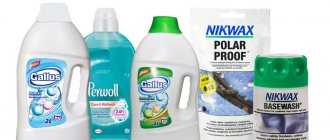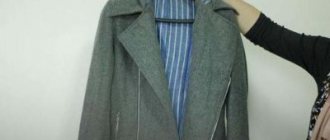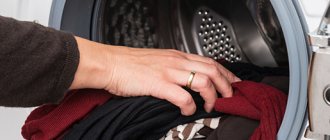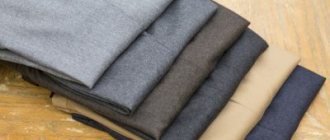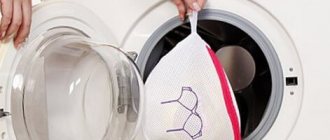Almost every family has plush toys with musical accompaniment. But behind the beauty and softness of such “pets” there is a danger - microbes and dust mites accumulating in the fabric, which, if in close contact, harm the child. There are two options: either throw it away or clean it.
The problem is that you cannot wash soft musical toys in the washing machine in the usual way - after being in the water they will stop singing. Let's figure out how to get rid of dirt and not spoil the “singing” bear.
Is it possible to wash soft toys at home?
To figure out whether washing will damage the toy, you need to pay attention to the label. It is there that basically contains information about whether the product can be washed, and which method is suitable for this (in a machine or by hand).
It is not advisable to wash the following toys:
- with electronics and musical elements;
- with natural filling (feathers, sawdust, buckwheat husk);
- with glued nose, eyes and other decorations.
Toys made from wool, felt and other natural materials will have to be washed by hand. The fact is that washing in a machine will most likely lead to significant deformation. You won’t be able to wash huge toys that don’t fit in the machine’s drum. Such products are washed by hand. But at the same time, drying them is problematic, since they absorb a lot of water. And due to prolonged drying, the filler will simply lock out.
You can take a large toy to the dry cleaner. If you can't do this, for example, because of the high price, you can dry clean it or rip the seams and pull out the filling. And after washing, stuff it back and sew it up.
Soft toys that contain small balls cannot be machine washed, as the seams may come apart. And in this case, not only the product itself will be damaged, but also the equipment.
Recommendations
The following tips will help make washing toys by hand easier:
- All manipulations must be carried out using rubber gloves.
- If there is some kind of electronic unit inserted inside the toy (for music, lighting, etc.), it must be removed before washing.
- Cleaning must be done very carefully, especially around small parts (eyes, nose) and those that are glued rather than sewn.
- Before washing, make sure that all seams are well stitched and small parts on the material are carefully secured.
- Toys that need washing should not be stored together with new and clean ones.
If a toy, even after careful treatment, becomes stained and fades heavily, this indicates its low quality and the use of questionable materials and dyes. There’s definitely no point in regretting something like this.
Approved detergents for washing children's toys
It is important to remember that if a child is allergic to any gel or powder, then it is prohibited to use them for cleaning.
What could theoretically work:
- Shampoo. It is advisable to wash toys intended for children under three years of age with baby shampoo.
- Baby powder. Products should be washed separately from other items. The fact is that if there are black things in the washing machine, the lint will be visible on them.
- Detergent for washing delicate items in the form of capsules, which are suitable if there is no baby powder.
- Laundry soap. It is considered effective as it copes well with stains and other contaminants. It should not be used for white products; they may become yellowish.
- Baby soap. It can be used to remove heavy stains.
An ordinary conditioner is suitable as a rinse aid, but for children's clothes. It will make the artificial fur soft and fluffy, as well as fragrant.
Often, detergents are not washed out of toys well enough. Due to the fact that the child is in close contact with them, choose powders and soaps with a hypoallergenic composition.
Preparation
You should think about how to wash a large soft toy even at the purchase stage, because with proper care the product will serve for a long time and faithfully. There is a set of rules, following which, you can maintain the neat appearance and original shape of the product.
Before washing a plush product, it must be carefully checked:
- Parts may be poorly sewn: a paw or button has come off, or a bow has become frayed. Even the padding can stick out from the torn material. In this case, repairs are required.
- You also need to examine it for the presence of electronic components. If it is possible to pull them out, it is better to do it right away. Sometimes you have to rip the material and then sew it up again, which is not very convenient.
- If there are heavy stains on the fabric, they should be removed in advance.
- Special bags are used to protect delicate fabrics.
Additional Information! If you need to wipe off a greasy stain, you should use regular dishwashing detergent. It will do the job perfectly.
How to properly wash toys in an automatic machine
Machine washable only for those toys that have this indicated on the label. If there is no tag, then you should use the recommendations that will consistently tell you how to wash soft items in a washing machine.
In this case, it is better to adhere to the following algorithm:
- Put them in the drum. Products with glued parts are best placed in special bags. This way you will not damage the machine if the elements come off. If you don't find laundry bags on sale, you can put them in a large pillowcase and tie it.
- Pour or pour a sufficient amount of detergent into the powder compartment.
- Wash on a gentle cycle. The temperature regime should not be too aggressive. A temperature of 30 degrees is suitable.
- Use an extra rinse.
- Squeeze toys at minimum speed (400-600).
How to wash soft toys by hand
Washing by hand is the most gentle method. It is suitable in cases where the product does not contain tags with washing information. Consistent instructions will tell you how to properly clean your soft friend.
Actions must be performed in the following sequence:
- Pour warm water into a basin (30°C will be enough).
- Place the toy in the basin.
- Lather it with baby shampoo, you can use other products that we talked about above.
- Soak it for 10 minutes, no more.
- Next, remember it carefully and from all sides.
- This type of washing may leave stains. Rub these areas more thoroughly. If there are greasy stains, soak a cotton swab in alcohol and apply to them - the stains will come off.
- Finally, rinse the toy in clean, cool water to ensure no cleaning agent remains.
Washing musical soft toys
Be careful not to get any liquid on the musical mechanism. Therefore, the sensor should be removed before washing. To do this, simply open one of the side seams. And after washing you can put it back in its place. Before throwing a soft product into the drum, quickly add stitches to the seam so that the filler does not end up on the outside.
You can return the mechanical device inside the soft toy only after the filling inside it has completely dried. This way the batteries will not oxidize, and the mechanism itself will not be damaged by water.
But to tidy up your electronic friend, whose whole body is covered in wires, it is best to use wet or dry cleaning.
Main types
The world of toys is wide and varied, like a child’s imagination. There you can meet all kinds of flora and fauna, cartoon and fairy tale characters, even representatives of the automotive industry.
They can be divided into several conditional groups:
- educational, include soft books, rugs and small-sized construction sets;
- musical, thanks to built-in mechanisms they produce a certain set of words, sounds or melodies;
- standard ones, such as stuffed animals, birds or fish;
- multifunctional, having in their arsenal sound, light or other types of effects at the same time.
The world of toys is wide and diverse.
The selected varieties reflect only part of the world of soft toys. All of them can still be divided by size, relation to different cultures and countries, and materials of manufacture.
Children, as a rule, do not pay attention to these subtleties, limiting themselves to a simple choice: either like it or not. And regardless of the type, all plush products need to be cleaned.
Toys for newborns
In babies under one year of age, immunity is not fully formed. It is necessary to handle everything with which the child has direct contact. This does not mean that the fur bear should be boiled after each fall on the floor. With regular wet cleaning, the floor will be, if not sterile, then clean.
It is enough to adhere to the basic rules for the hygiene of your baby’s plush companions:
- Immediately after purchase, you should read the information on the tag. After this, it will become clear whether machine and hand washing is possible, or dry cleaning only.
- If the product can be washed, you should use baby powder or laundry soap.
- In some interactive models, it is possible to remove the mechanism and then return it to its place after washing.
- To maintain the richness of the colors and the softness of the pile, you can use baby fabric conditioner.
- Electronic mechanisms are disinfected with alcohol or an antibacterial solution, such as chlorhexidine.
- Finally, the toys are dried; you can speed up the process with a hairdryer.
How to care for soft toys
After such preparation, you can safely give the new comrade to the child. With further use, fluffy dust collectors should be washed at least once a week. Otherwise, there is a risk of dust mites appearing in them.
And it, in turn, can provoke various types of allergies and respiratory diseases, including bronchial asthma.
Weekly treatments include:
- cleaning plastic and wooden parts with a damp cloth;
- processing lint or fabric with a vacuum cleaner;
- wet processing of pile or fabric.
Regardless of the frequency of cleaning your plush friends, their abundance in a newborn’s crib poses a certain danger. While playing, the baby can bury his nose in them and suffocate. Therefore, the constant presence of soft toys in the baby's sleeping area is not recommended.
How to wash and clean a plush toy
You can simply wash the plush elephants and bunnies, or you can use another method: cleaning with steam. Perhaps it is the safest and most environmentally friendly. Steam is not capable of exerting a mechanical effect on materials. This means that you simply cannot damage the toy. Only products equipped with electronics should not be cleaned in this way.
To begin with, all plush animals should be cleaned with a vacuum cleaner, and then a small area of the product should be treated with steam to accurately understand whether the material will deteriorate. If all is well, you can safely continue. A powerful stream of steam will allow you to soften the dirt. After that, you can simply brush them off.
The preferred way to care for plush yarn toys is hand washing. It will be enough to wash the toy in warm water. The temperature should be no more than 30 degrees. You should use baby shampoo. No need to squeeze. Just let the moisture soak into the towel. It would be enough. Otherwise, the toy will be deformed. Wet cleaning is also suitable, which will be discussed below.
Ways to wash knitted toys
It is advisable to wash knitted toys regularly, but it is better to wash them by hand and in warm water. For cleaning, mild products without bleaching effect or without stain removers are suitable. Try to rinse any remaining detergent from your child's pets.
If you are not afraid, then you can wash such toys in a machine, but on a delicate wash. The toy must be placed in a laundry bag. But you can also use ordinary wet wipes for cleaning if the product is not very dirty.
Drying rules
Simply washing and wrung out a stuffed animal is not enough; these actions can ruin the toys. Experienced housewives recommend adhering to only four rules:
- At the end of the wash, spin it manually; a terry towel can be an excellent handy tool, which will actively absorb excess liquid.
- Place the plush pet strictly horizontally and only in a well-ventilated area, so that the wet plush does not absorb foreign odors and become a carrier of a new unpleasant aroma.
- Depending on the material of the product, it can be hung, but only if it is not knitted or natural material, otherwise the object will lose its shape.
- Machine drying is prohibited.
Rules for washing soft toys during quarantine
It is necessary not only to wash toys at home, but also to disinfect them periodically. Wash the toy at temperatures above 60 degrees; viruses cannot withstand high temperatures. If the tag says that washing can only be done at low temperatures, then you can additionally destroy germs using a steamer or an iron with a steam function.
Use the following methods:
- Ultraviolet treatment. It can be carried out using a quartz lamp. Or you can simply place the items in the sun.
- Freezing. Small toys can be placed in a bag and placed in the freezer for two days. Most viruses and microbes die in such an environment.
- Steam treatment. To destroy bacteria, you can simply treat the surface of children's toys with steam.
How and with what to clean a toy that cannot be washed
Dry cleaning is ideal for products that are equipped with electronics, light and sound modules, as well as those filled with foam or foam balls or decorated with decorations.
Before cleaning, you need to put the toy in a pillowcase or a special laundry bag. Prepare a cleaning agent: it is best to use baking soda or starch for this purpose. Such substances do an excellent job of removing dirt.
Pour some starch into the bag, zip it up and shake thoroughly. The absorbent will be evenly distributed throughout the product. The toy should be left in the starch for at least an hour. You need to shake the contents periodically. When you remove the toy from the bag, carefully clean its surface with a brush. If there is still absorbent on the toy, remove it with a vacuum cleaner.
For wet cleaning, you need to dissolve a mild detergent in water (it should be warm), wet the sponge with foam and start wiping the toy. Do not press too hard, the product should not absorb foam. Try to rinse the sponge from dirt more often.
How often should you wash soft toys?
If you are a caring mother, try to periodically clean or wash toys. This must be done once a month, in no case less often. Otherwise, over time, they will turn into a real breeding ground for microbes.
If you follow the simple rules given in this article, you can not only get rid of dirt and germs on toys, but also maintain their attractive appearance. Remember that the child comes into close contact with them, so they should always be clean.
Are they dirty?
Watch a child play with a teddy bear, bunny or rag doll. He not only rolls the toy on the floor, there are also hugs and kisses, and a taste test. What adds to the problem is that no matter how cleanly you tidy your apartment, the ubiquitous dust still penetrates the premises and settles on surfaces. It is not always possible to notice how gradually a toy loses its brightness of color under a layer of dust.
Children spend a lot of time with soft toys, so these products will definitely need to be washed.
In addition, children often do not let go of their favorite soft toys for literally a minute. This means that the soft playmate will probably swim in a puddle, roll around in the sandbox and smear himself on the grass. As you can see, periodic washing is simply necessary for such toys. Otherwise, the germs along with the dirt will transfer to the child.
Soft toys should be washed as they become dirty. If your child really loves such an item, then washing should be done at least every 2-3 weeks. Before you start cleaning, look at the toy label: care instructions are indicated there.
Unfortunately, dust mites are permanent residents of soft toys, and they can cause allergies in a child.

